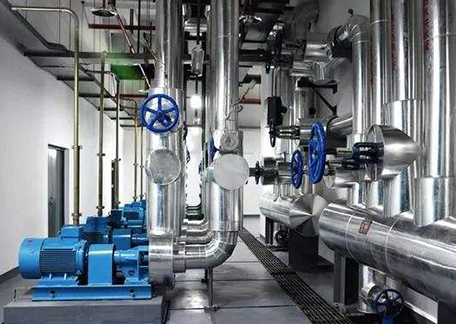Requirements of water pumps for pressurized water pipelines
The requirements of water pumps for pressure water pipelines are mainly reflected in the following aspects:
1. High pressure resistance
Sturdy and leakproof: Since the water pressure of the water pump's pressure water pipeline is high, the pressure is even higher when water hammer occurs, so the pressure water pipeline must be strong and have good sealing to prevent leakage. This usually means that the pipeline material needs to have high strength and pressure resistance.
Material selection: The commonly used pressure water pipeline material is steel pipe, because it has high strength and pressure resistance. Welding is often used at the interface to ensure the firmness and sealing of the connection.
2. Water supply safety
Prevent water backflow: In a water supply system where water backflow is not allowed, a check valve should be installed on the pressure water pipeline. The function of the check valve is to prevent water from flowing back when the pump stops running, thereby protecting the water pump and the pipeline system.
Selection and installation of check valves: Commonly used check valves are swing type and micro-resistance slow closing type. The valve plate of the swing check valve has a shorter closing time, but it may generate greater water hammer pressure when the pump stops. The micro-resistance slow-closing check valve can slowly close when the water pump stops running, effectively reducing the water hammer pressure, and thus gradually replaced the swing check valve. The check valve is usually installed between the water pump and the gate valve on the pressure water pipeline for easy maintenance and replacement.

3. Installation and maintenance convenience
Flange interface: For easy installation and maintenance, the pressure water pipeline should be provided with a flange interface at an appropriate position. The flange interface allows the pipeline to be disassembled and replaced without cutting off the water flow, thereby improving maintenance efficiency.
Expansion joint or rubber joint: In order to prevent the stress caused by temperature changes, water hammer, etc. from being transmitted to the water pump, an expansion joint or a flexible rubber joint should be provided in the pipeline system. These joints can absorb the vibration and displacement of the pipeline system and protect the safety of the water pump and the pipeline system.
4. Flow rate and flow control
Flow rate control: The flow rate of the pressure water pipeline should be reasonably controlled according to the diameter of the pipeline. Generally speaking, the flow rate of pipes with a diameter less than 250mm is controlled at 1.52.0m/s; the flow rate of pipes with a diameter between 250mm and 1000mm is controlled at 2.03.0m/s. Reasonable flow rate control helps to reduce the energy loss and head loss of the pipeline system.
Flow control: The flow rate of the water pump should meet the actual water demand to avoid excessive or too small flow rate from causing adverse effects on the pipeline system.
V. Other requirements
Piers or tie rods: At the bends of the pipeline, special piers or tie rods should be set to support the pipeline to prevent the centrifugal force generated by the water flow from damaging the pipeline.
Pipeline system safety: The entire pressurized water pipeline system should be regularly inspected and maintained to ensure its safe and stable operation.




